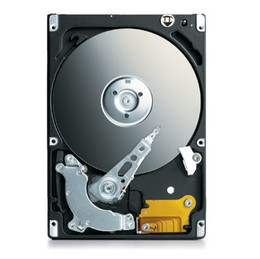 Immediately following Intel’s announcement that they expected Q4 revenue to come up short by $1B, Rory Read the new CEO of AMD, countered that they were on track to meet their original guidance (see article). Furthermore, “In 1Q and 2Q, maybe you see some manifestations, but I wouldn’t bet against the supply chain,” Read said at a Raymond James conference. “They’re very resilient.” This leads to the question of what is really happening in the PC market and who to believe. My best guess is that Intel decided sometime in November to give up short-term market share for the opportunity to ramp 22nm faster and win back share by mid 2012.
Immediately following Intel’s announcement that they expected Q4 revenue to come up short by $1B, Rory Read the new CEO of AMD, countered that they were on track to meet their original guidance (see article). Furthermore, “In 1Q and 2Q, maybe you see some manifestations, but I wouldn’t bet against the supply chain,” Read said at a Raymond James conference. “They’re very resilient.” This leads to the question of what is really happening in the PC market and who to believe. My best guess is that Intel decided sometime in November to give up short-term market share for the opportunity to ramp 22nm faster and win back share by mid 2012.
When Seagate reported its earnings the end of November, the CEO mentioned in a Business Week article that at the moment they could take advantage of WD’s shortfall with an immediate 40% increase in hard drive pricing. Alternatively, Seagate would offer customers willing to sign up for one to three years an increase of only 20%. Major PC OEMs were presented with an opportunity that they had not seen in sometime. If they signed on with the new HDD pricing and used an AMD processor, they could gain share with respect to white box PC manufacturers (the ones who would be paying up to 40% more on HDDs). In addition by switching to AMD they would be able to maintain end system price points by offsetting hard drive price increases with the processor price savings. So if it plays out as it has in past history, the branded PC makers should gain share and increased profits this quarter.
On the Intel side of the ledger, it is likely that the OEMs went to Intel first to appeal for lower processor pricing to offset the hard drive price increases and therefore maintain system price points, especially in the low end consumer market. My guess is that Intel knew that this was coming, however was debating whether to fulfill this quarters numbers or alternatively to focus the company on ramping 22nm faster, getting yields up and driving the ultrabook form factor to the eventual $500 price point sooner rather than later. If one role plays the different scenarios from shortage of HDD in Q1 and recovery in Q2 to the extreme case of full recovery late in Q4, the answer still comes up to ramp 22nm earlier.
Given the above scenario, Intel will now execute on an accelerated Ivy Bridge PR strategy that starts with pre-announcements and system demos starting at the CES show in early January and continuing throughout Q1. This will force a market freeze on many PC purchases in Q1, especially mobiles as consumers wait for the new Ivy Bridge PCs. The market stall will reduce the impact of the HDD shortage and shift the allocation of HDDs in Q1 and Q2 towards systems utilizing the new 22nm Ivy Bridge Mobiles at the expense of all other PCs. Intel’s PR and manufacturing ramp will effectively obsolete a large part of the mobile PC market by sometime in March. System Vendors need to be in synch with Intel or they will lose a lot of money with any overbuilding of inventory that is not sold out prior to the April Ivy Bridge Launch. Intel will also incentivize the retail channel to turn over the floor models overnight. The Intel corporate sales team will inform CIOs that it is best to wait until the new systems arrive. Servers will still be 32nm Sandy Bridge through the 1H 2012.
Just as the rumors of Apple’s iPhone 4S in August and September slowed down the sales of the iPhone4, Intel has the power to cause the PC market to wait for Ivy Bridge’s launch in April. Bottom line is that AMD will enjoy revenue and market share gains in Q4, but beyond that there is great uncertainty. The CES show in January will be very telling. Expect 22nm Ivy Bridge, pre-production notebooks to be widely distributed to press and reviewers so that glowing reviews keep consumers on the sidelines until the official April Launches. The net effect of all Intel’s strategy is that they give up near term revenue and market share to maximize 1H 2012 revenue and get 22nm up the yield curve quicker.
Full Disclosure: I am Long AAPL and INTC








Comments
0 Replies to “Why AMD is Up Q4, While Intel is Down”
You must register or log in to view/post comments.